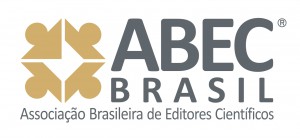Paquete para regular la temperatura corporal de recién nacidos de más de 34 semanas: construcción y validación
DOI:
https://doi.org/10.5216/ree.v26.76948Palabras clave:
Estudio de Validación, Recién Nacido, Regulación de la Temperatura Corporal, Hipotermia, Paquetes de Atención al PacienteResumen
Objetivo:Describir el proceso de creación y validación de un paquete para promover la regulación de la temperatura corporal en recién nacidos de más de 34 semanas de edad.
Métodos:Investigación metodológica realizada en tres etapas: una revisión del alcance, la construcción de la primera versión del paquete y la validación del contenido llevada a cabo por 15 expertos, nueve enfermeras y seis médicos, seleccionados según criterios adaptados a partir de referencias en la materia. Se consideró aceptable un índice de validez de contenido superior a 0,80 para el acuerdo entre los expertos sobre cada tipo de atención. Fueron necesarias dos rondas de evaluación para elaborar la versión final.
Resultados:El paquete se estructuró en cuidados: en la sala de partos, durante el transporte y en la unidad de alojamiento, con un total de 15 ítems, todos ellos con una concordancia superior a 0,90 tras la segunda ronda de evaluación.
Conclusión:El paquete se consideró válido en cuanto a su contenido y establece una atención basada en pruebas científicas de forma estandarizada y segura para el equipo de atención al parto.
Descargas
Citas
Nguyen L, Mitsakakis N, Sucha E, Lemyre B, Lawrence SL. Factors associated with hypothermia within the first 6hours of life in infants born at ≥340o weeks’ gestation: a multivariable analysis. BMC Pediatr. 2022 July;22(1):447. https://doi.org/10.1186/s12887-022-03512-x
Tourneux P, Thiriez G, Renesme L, Zores C, Sizun J, Kuhn P, et al. Optimising homeothermy in neonates: a systematic review and clinical guidelines from the French Neonatal Society. Acta Paediatr. 2022 May;111(8):1490-9. https://doi.org/10.1111/apa.16407
Billner-Garcia R, Spilker A, Goyal D. Skin to Skin Contact. Newborn Temperature Stability in the Operating Room. MCN Am J Matern Child Nurs. 2018 May/June;43(3):158- 63. https://doi.org/10.1097/NMC.0000000000000430
Sociedade Brasileira de Pediatria. Reanimação do recém- nascido ≥ 34 semanas em sala de parto: Diretrizes da Sociedade Brasileira de Pediatria. Versão 2016 com atualizações em maio de 2021 [Internet]. 2021 [cited 2023 Aug 17];1-33. Available from: https://www.sbp.com.br/fileadmin/user_upload/DiretrizesSBP-ReanimacaoRN_Maior34semanas-MAIO_2021.pdf
Merazzi D, Bresesti I, Tagliabue P, Valsecchi MG, Lorenzo P, Lista G, et al. Body temperature at nursery admission in a cohort of healthy newborn infants: results from an observational cross-sectional study. Ital J Pediatr. 2020 Apr 15;46(1):46. https://doi.org/10.1186/s13052-020-0810-z
Melo JMA, Oliveira PP, Rodrigues AB, Souza RS, Fonseca DF, Gontijo TF, et al. Bundle construction and assessment before antineoplastic extravasation: a methodological study. Acta Paul Enferm. 2020;33:1-12. https://doi.org/10.37689/acta-ape/2020AO0075
Ogrinc G, Davies L, Goodman D, Batalden P, Davidoff F, Stevens D. SQUIRE 2.0 (Standards for QUality Improvement Reporting Excellence): revised publication guidelines from a detailed consensus process. J Nurs Care Qual. 2016 Jan/Mar;31(1):1-8. https://doi.org/10.1097/NCQ.0000000000000153
Peters MDJ, Godfrey C, McInerney P, Munn Z, Tricco AC, Khalil H. Chapter 11: Scoping reviews (2020 version). In: Aromataris E, Munn Z, editors. JBI Manual for evidence synthesis. The Joanna Briggs Institute. 2020 June. https://doi.org/10.46658/JBIMES-20-12
Page MJ, McKenzie JE, Bossuyt PM, Boutron I, Hoffmann TC, Mulrow CD, et al. The PRISMA 2020 statement: an updated guideline for reporting systematic reviews. BMJ. 2021 Mar;372:n71. https://doi.org/10.1136/bmj.n71
Melnyk BM, Fineout-Overholt E. Evidence-based practice in nursing & healthcare. A guide to best practice. China: Wolters Kluwer/Lippincott Williams & Wilkins; 2011.
Fehring R. Methods to validate nursing diagnoses. Heart Lung. 1987 Nov;16(6 Pt 1):625-9. PMID: 3679856.
Polit DF, Beck CT. Fundamentos de pesquisa em enfermagem: avaliação de evidências para a prática da enfermagem. Porto Alegre: Artmed; 2019.
Lunze K, Yeboah-Antwi K, Marsh DR, Kafwanda SN, Musso A, Semrau K, et al. Prevention and management of neonatal hypothermia in rural Zambia. PLoS One. 2014 Apr;9(4):e92006. https://doi.org/10.1371/journal.pone.0092006
Nimbalkar SM, Patel VK, Patel DV, Nimbalkar AS, Sethi A, Phatak A. Effect of early skin-to-skin contact following normal delivery on incidence of hypothermia in neonates more than 1800 g: randomized control trial. J Perinatol. 2014 Feb;34(5):364-8. https://doi.org/10.1038/jp.2014.15
Srivastava S, Gupta A, Bhatnagar A, Dutta S. Effect of very early skin to skin contact on success at breastfeeding and preventing early hypothermia in neonates. Indian J Public Health. 2014 Jan-Mar;58(1):22-6. https://doi.org/10.4103/0019-557X.128160
George S, Phillips K, Mallory S, Holmquistova I, Hare R, Allen S, et al. A pragmatic descriptive study of rewarming the newborn after the first bath. J Obstet Gynecol Neonatal Nurs. 2015 Mar-Apr;44(2):203-9. https://doi.org/10.1111/1552-6909.12556
Perlman J, Kjaer K. Neonatal and maternal temperature regulation during and after delivery. Anesth Analg. 2016 July;123(1):168-72. https://doi.org/10.1213/ANE.0000000000001256
Duryea EL, Nelson DB, Wyckoff MH, Grant EN, Tao W, Sadana N, et al. The impact of ambient operating room temperature on neonatal and maternal hypothermia and associated morbidities: a randomized controlled trial. Am J Obstet Gynecol. 2016 Apr;214(4):505.e1-505.e7. https://doi.org/10.1016/j.ajog.2016.01.190
Cleveland L, Hill CM, Pulse WS, DiCioccio HC, Field T, White-Traut R. Systematic review of skin-to-skin care for full- term, healthy newborns. J Obstet Gynecol Neonatal Nurs. 2017 Nov-Dec;46(6):857-69. https://doi.org/10.1016/j.jogn.2017.08.005
Sharma D, Sharma P, Shastri S. Golden 60minutes of newborn’s life: part 2: term neonate. J Matern Fetal Neonatal Med. 2017 Nov;30(22):2728-33. https://doi.org/10.1080/14767058.2016.1261399
Ramani M, Choe EA, Major M, Newton R, Mwenechanya M, Travers CP, et al. Kangaroo mother care for the prevention of neonatal hypothermia: a randomised controlled trial in term neonates. Arch Dis Child. 2018 May;103(5):492-7. https://doi.org/10.1136/archdischild-2017-313744
Ruschel LM, Pedrini DB, Cunha MLC. Hipotermia e banho do recém-nascido nas primeiras horas de vida. Rev Gaúcha Enferm. 2018;39:e20170263. https://doi.org/10.1590/1983-1447.2018.20170263
Trevisanuto D, Testoni D, Almeida MFB. Maintaining normothermia: why and how? Semin Fetal Neonatal Med. 2018 Oct;23(5):333-9. https://doi.org/10.1016/j.siny.2018.03.009
Gözen D, Çaka SY, Beşirik SA, Perk Y. First bathing time of newborn infants after birth: a comparative analysis. J Spec Pediatr Nurs. 2019 Apr;24(2):e12239. https://doi.org/10.1111/jspn.12239
Lima RO, Estevam LD, Leite FMC, Almeida MVS, Nascimento L, Amorim MHC, et al. Intervenção de enfermagem-primeiro banho do recém-nascido: estudo randomizado sobre o comportamento neonatal. Acta Paul Enferm. 2020;33:1-10. https://doi.org/10.37689/acta-ape/2020AO0031
Kardum D, Bell EF, Grčić BF, Müller A. Duration of skin- to-skin care and rectal temperatures in late preterm and term infants. BMC Pregnancy Childbirth. 2022 Aug;22(1):655. https://doi.org/10.1186/s12884-022-04983-7
Wood T, Johnson M, Temples T, Bordelon C. Thermoneutral environment for neonates: back to the basics. Neonatal Netw. 2022 Aug;41(5):289-96. https://doi.org/10.1891/NN-2022-0003
Dubos C, Delanaud S, Brenac W, Yassin FC, Carpentier M, Tourneux P. The newborn infant’s thermal environment in the delivery room when skin-to-skin care has to be interrupted. J Matern Fetal Neonatal Med. 2022 Oct;35(19):3707-13. https://doi.org/10.1080/14767058.2020.1838479
Priyadarshi M, Balachander B, Gupta S, Sankar MJ. Timing of first bath in term healthy newborns: a systematic review. J Glob Health. 2022 Aug;12:12004. https://doi.org/10.7189/jogh.12.12004
Brasil. Ministério da Saúde. Secretaria de Ciência, Tecnologia e Insumos Estratégicos. Departamento de Gestão e Incorporação de Tecnologias em Saúde. Diretriz nacional de assistência ao parto normal: versão resumida [Internet]. Brasília: Ministério da Saúde, 2022 [cited 2023 Aug 17]. Available from: http://189.28.128.100/dab/docs/portaldab/publicacoes/diretriz_assistencia_parto_normal.pdf
World Health Organization. WHO recommendations on maternal and newborn care for a positive postnatal experience [Internet]. Geneva: World Health Organization; 2022 [cited 2023 Aug 17]. Available from: https://www.who.int/publications/i/item/9789240045989
Schott LC, Góes FGB, Santos AST, Silva ACSS, Pereira- Ávila FMV, Goulart MCL. Adherence to humanized care practices for newborns with good vitality in the delivery room. Rev Gaúcha Enferm. 2022;43:e20210248. https://doi.org/10.1590/1983-1447.2022.20210248.en
Muhindo MK, Bress J, Armas J, Danziger E, Wu A, Brewster RCL. The utilization of clinical decision support tools to identify neonatal hypothermia and its associated risk factors: a prospective observational study. PLOS Glob Public Health. 2023 Feb;3(2):e0000982. https://doi.org/10.1371/journal.pgph.0000982
Góes FGB, Ledo BC, Santos AST, Bastos MPC, Silva ACSS, Pereira-Ávila FMV. Good practices in caring for a newborn with good vitality in the delivery room: integrative review. R Pesq Cuid Fundam Online. 2021 jan- dez;13:899-906. https://doi.org/10.9789/2175-5361.rpcfo.v13.9611
Uchoa JL, Barbosa LP, Mendonça LBA, Lima FET, Almeida PC, Rocha SS. Influence of social determinants of health on skin to skin contact between mother and newborn. Rev Bras Enferm. 2021 June;74(Suppl 4):e20200138. https://doi.org/10.1590/0034-7167-2020-0138
Araújo KEAS, Santos CC, Caminha MFC, Silva SL, Pereira JCN, Batista Filho M. Skin to skin contact and the early initiation of breastfeeding: a cross-sectional study. Texto & Contexto Enferm. 2021 Aug;30:e20200621. https://doi.org/10.1590/1980-265X-TCE-2020-0621
Barreiros CAMC, Gomes ALM, Machado MED, Magesti BN, Rodrigues EC, Christoffel MM. Contato pele a pele e amamentação: interfaces com aleitamento materno exclusivo na alta hospitalar. Rev Enferm UERJ. 2022;30:e63381. https://doi.org/10.12957/reuerj.2022.63381
Holztrattner JS, Gouveia HG, Moraes MG, Carlotto FD, Klein BE, Coelho DF. Early skin-to-skin contact in a child friendly hospital: perceptions of the obstetric nurses. Rev Gaúcha Enferm. 2021;42:e20190474. https://doi.org/10.1590/1983-1447.2021.20190474
Chiriboga N, Cortez J, Pena-Ariet A, Makker K, Smotherman C, Gautam S, et al. Successful implementation of an intracranial hemorrhage (ICH) bundle in reducing severe ICH: a quality improvement project. J Perinatol. 2019 Jan;39(1):143-51. https://doi.org/10.1038/s41372-018-0257-x
Karlsson K, Makatura J, Mulkey D. Implementing a maternal rest bundle to prevent newborn falls. J Obstet Gynecol Neonatal Nurs. 2021 Sep;50(5):621-31. https://doi.org/10.1016/j.jogn.2021.06.005
Descargas
Publicado
Número
Sección
Licencia
Derechos de autor 2024 Revista Eletrônica de Enfermagem

Esta obra está bajo una licencia internacional Creative Commons Atribución 4.0.














